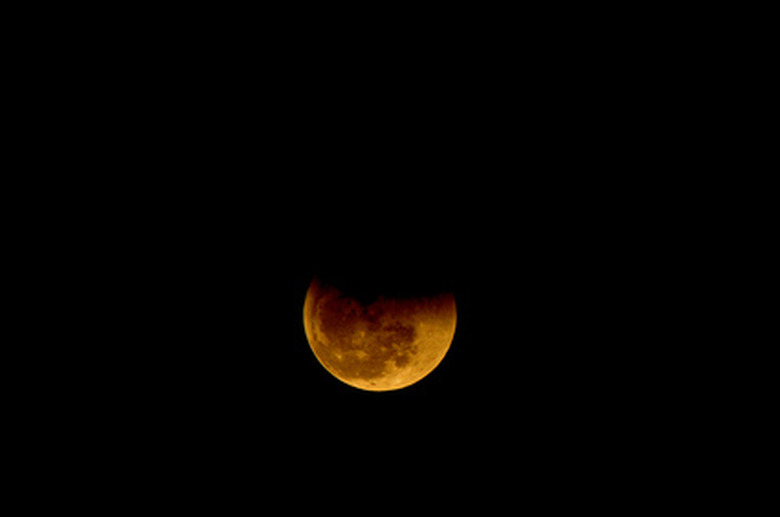Lunar Eclipse Science Projects
NASA describes a lunar eclipse as occurring when the moon's orbit around the Earth reaches such a point that the sun is directly behind the Earth, casting a complete shadow over the moon and making it invisible to anyone standing on Earth's surface. The moon is a fascinating astronomical object, and many students might be tempted to do projects relating to the lunar eclipse. Once you understand the mechanics of the lunar eclipse, there are several angles from which to approach a potential project.
Modeling an Eclipse
Modeling an Eclipse
One of the best and most straightforward projects might be the lunar eclipse model. The level of sophistication in the model will vary depending on the amount of time and the grade level that the project is geared toward. But the basic needs are this: two spherical objects, preferably scaled to Earth's and the moon's respective sizes, and a light source, again, preferably scaled.
Stanford University offers the simple illustration of having a light bulb in the middle of the room, representing the sun, and holding a small, plastic foam ball attached to the end of a small stick or pencil. This will represent the moon. Turn your back to the ball, and slowly move the ball into the shadow cast by your head, which represents Earth. This quite easily and clearly illustrates the stages of the moon, all the way to the lunar eclipse, when the ball is entirely in shadow.
That is the most basic form of the model, but you could also set these elements on tracks and label different stopping points to mark the phases and also create a realistic timeline. Again, the level of detail is at the student's discretion.
Tracking an Eclipse
Tracking an Eclipse
An interesting exercise is to document the actual progress of the moon's phases from new moon all the way to lunar eclipse. This will require that you check a resource such as the Naval Oceanographic Portal, which forecasts the dates for these phases as part of its tidal studies.
Then, simply keep a log of the appearance of the moon over time, supplementing written descriptions with visuals, either sketches of the moon or photographs.
For a more advanced project involving lunar phases and tracking eclipses, you can use the Navy's Lunar Eclipse Computer, which forecasts lunar eclipses around the world by coordinates. You could use this tool to track lunar eclipses in cities along a certain latitude or longitude and create a model or sketch of this data to illustrate the motion of the moon in relation to Earth.
Lunar Eclipse and Stability
Lunar Eclipse and Stability
This is an advanced project, as even experts are still grappling with the data and its implications, but according to National Geographic, there are theories that certain geological and climate events, such as earthquakes, occur with more frequency when the moon is full.
This would be an historical data analysis and would require using NASA or Navy records of eclipse cycles and matching them up with data from somewhere such as the U.S. Geological Survey in an attempt to prove a causal relationship.
A project such as this would require strong math and research skills, but if you were to embark on it, you would likely want to look at something such as global earthquake activity during the full moon and during the lunar eclipse, as these are the points when the moon is closest to Earth.
Cite This Article
MLA
Dallas, Ray. "Lunar Eclipse Science Projects" sciencing.com, https://www.sciencing.com/lunar-eclipse-science-projects-5953214/. 24 April 2017.
APA
Dallas, Ray. (2017, April 24). Lunar Eclipse Science Projects. sciencing.com. Retrieved from https://www.sciencing.com/lunar-eclipse-science-projects-5953214/
Chicago
Dallas, Ray. Lunar Eclipse Science Projects last modified August 30, 2022. https://www.sciencing.com/lunar-eclipse-science-projects-5953214/
